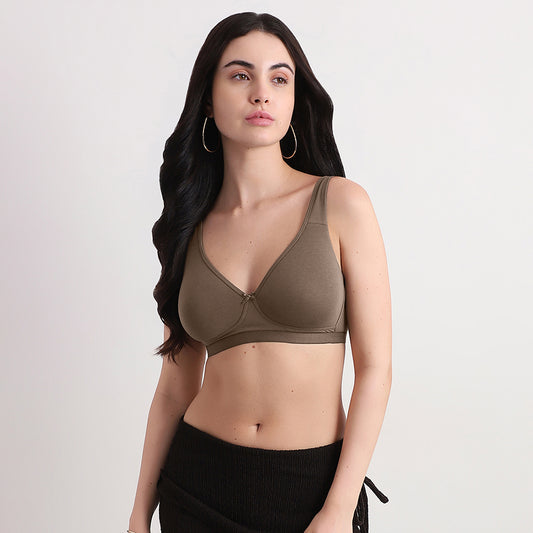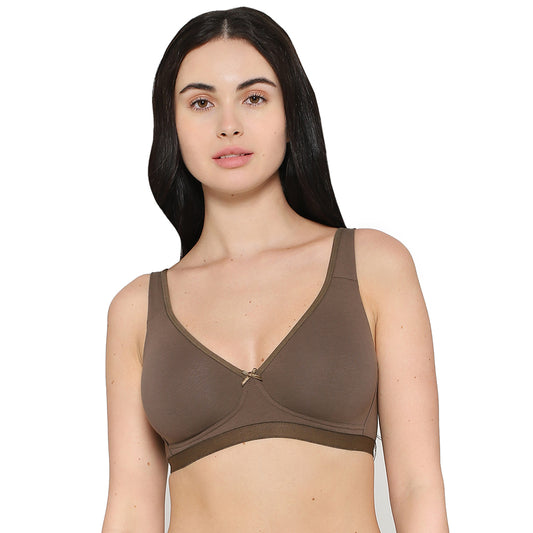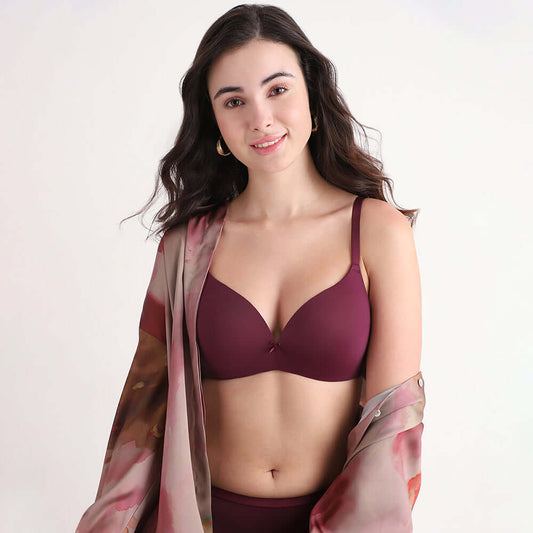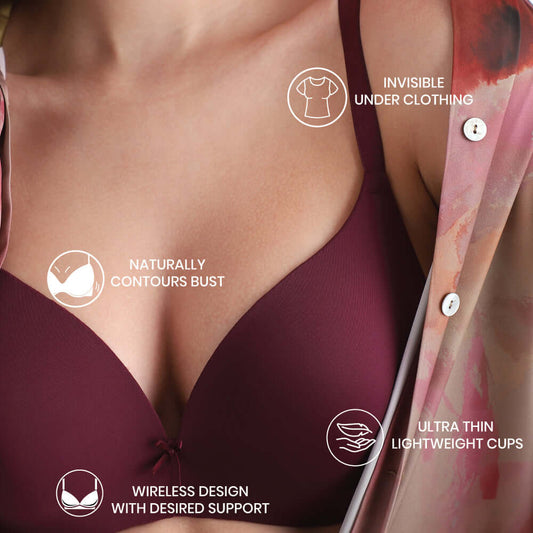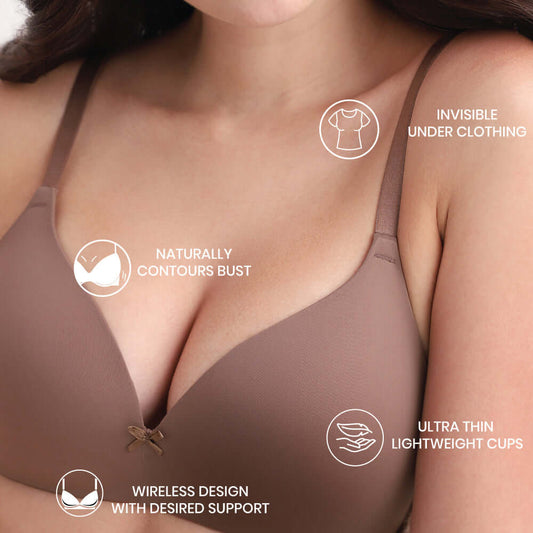Bra problems are just like a bad date – uncomfortable, and awkward, and you're just counting down the minutes until it's over. But not anymore! We can help you solve your bra problems so that you might enjoy a good date as well. Let's address all the challenges preventing you from having a great bra experience.
Bra Straps slipping off
If your "Bra Straps are slipping off" it means you are trying to walk in shoes that are two sizes bigger. The shoulder straps do not stay in place even for a second, frequently causing discomfort and requiring constant adjustment often due to incorrect strap length, a loose band, or worn-out elastic, affecting the bra's fit and support. Here are some solutions:
- Adjust the Straps: Ensure the straps are adjusted to the right length for your body. It's snug enough but not too tight to dig in.
- Check Bra Fit: Make sure the bra band fits snugly around your rib cage.
- Try Different Styles: Experiment with different strap styles that are wider or more textured and are less likely to slip.
- Use Strap Grips or Holders: Use Strap grips or holders that can be attached to the straps at the back to prevent them from slipping.
- Consider Racerback Bras: Racerback bras have straps that converge in the back, which can help prevent them from slipping off your shoulders.
- Replace Old Bras: The elasticity of old bras straps may be compromised, causing them to slip. Consider replacing them with new bras.
- Check Your Posture: Be mindful of your posture as poor posture can also cause straps to slip.
Bra Straps Dig in
Bra straps digging in is as irritating as an itchy tag left on the back of your shirt. When the straps are too tight or the weight distribution is uneven, it causes discomfort and can even leave marks on your skin. Let's see how you can avoid this:
- Adjust Strap Length: Ensure straps are adjusted to a comfortable length; they should provide support without digging in.
- Choose Wider Straps: Bras with wider straps distribute weight more evenly, reducing pressure on shoulders.
- Check Band Fit: A properly fitting band provides support, reducing the strain on shoulder straps.
- opt for Padded Straps: Padded straps offer extra comfort and cushioning, minimizing discomfort from strap pressure.
- Try different Bra Styles: Some styles, like racerback or convertible bras, distribute weight differently and may alleviate strap digging.
- Say bye to Old Bras: Worn-out bras may lose elasticity, causing straps to dig in. Replace bras regularly to maintain comfort.
Bra Band Rides up
When the band of the bra rides up in the back, it suggests the band is too loose or the bra is not properly adjusted. It's like sitting on a roller coaster without a secured safety belt. Let's learn a few tips to secure a band
- Correct Band Size: The band should fit snugly around your rib cage without being too tight or too loose.
- Firm Band Placement: Position the band parallel to the ground around your torso so that it sits evenly without riding up in the back.
- Adjustable Straps: Straps should provide support without bearing too much weight from a loose band.
- Try Different Brands or Styles: Experiment with bras that have a wider or more supportive band design.
- Understand Your Body Changes: Be aware of body changes that can affect how a bra fits and Regularly check your bra size.
Gaping Bra cups
A cup in a bra refers to the part of the bra that encloses and supports the breast tissue and you certainly don't need gaps in these cups. All you need is a good bra and lift-ups. Gaping cups in bras happens when the cups do not conform closely to the shape of the breasts, resulting in empty spaces or wrinkles due to wearing the wrong cup size or style that doesn't match your breast shape. Let's help you find the right cup:
- Try Different Cup Sizes: Experiment with smaller cup sizes to find a better fit that contours to your breasts.
- Adjust Band Size: Ensure the band is snug enough to provide proper support and keep the cups in place.
- Check Underwire Position: Make sure the underwire bra sits flat against your rib cage and covers your breasts fully.
- Consider Different Styles: Try styles with more coverage or different cup shapes.
- opt for Inserts or Padding: These can fill out gaps and provide a smoother fit.
- Consult a Professional: Get fitted by a professional to ensure you're wearing the correct size and style for your body shape.
Bra Cups sides overflowing
Wrong Container overflow beyond control. Bra Cups overflowing at the sides occur when breast tissue spills outside the cups' edges, typically due to wearing an ill-fitting bra style or size causing discomfort and an uneven silhouette under clothing.
- Try a Larger Cup Size: Ensure the cups fully cover the breasts without cutting into the sides.
- opt for Wider Side Panels: Bras with wider side panels or higher wings can help hold breast tissue more effectively.
- Check Band Fit: A properly fitted band offers vital support and stability to prevent cups from shifting.
- Consider Different Cup Styles: Experiment with full-coverage or balconette styles that offer better side coverage.
- Seek Professional Fitting: Consult with a bra fitting expert to find the right size and style that suits your body shape and provides optimal support and comfort.
The Bra wire sits on the breasts
When a bra's wire rests directly on the breasts, it causes discomfort and irritation, typically due to a cup size that is too small or improper wire positioning. It's like having a tiny, irritating object pressing against a sensitive area, causing a continuous awareness of its presence. A properly fitted bra should have the wire encasing the breast tissue within the cup, not resting on it.
Try a Larger Cup Size: Choose the cups to fully encapsulate the breasts without the wire digging into the breast tissue.
Check Wire Position: Adjust the bra so that the bra wire sits flat against the rib cage, not on the breasts themselves.
Consider Wireless Bras: opt for bras without underwire to eliminate this issue.
Evaluate Band Fit: Ensure the bra band is snug but comfortable to provide proper support and distribute weight evenly.
Consult a Professional: Get professionally fitted to find the right size and style that avoids wire discomfort and provides optimal comfort and support.
Addressing everyday bra challenges can be as difficult as solving puzzles or navigating a maze. By applying these solutions, you can enhance your comfort and confidence. We at Wacoal India understand your body's unique shape and needs and we are here to help you find bras that fit comfortably and provide adequate support. Because we know that a bounce-free bliss just feels like an all-day kiss.





